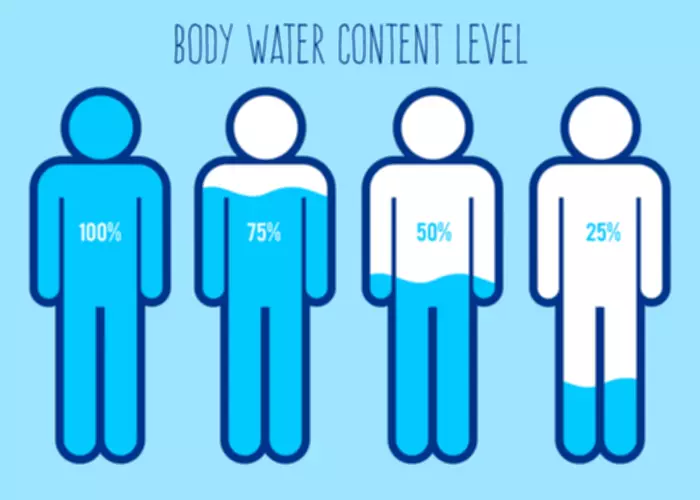
The alcohol may also cause more pronounced mood swings and changes during these times. Another issue with heavy drinking is that it may cause cycle irregularities. Women who drink a lot may have difficulties keeping track of their menstrual cycle. These women may also be at a higher risk for amenorrhea—an abnormal absence of menstruation. This phenomenon causes ovulation to occur out of sync with one’s menstrual cycle. AUD in women often leads to inflammation of the liver, which is also known as alcoholic hepatitis.

More in Addiction
It can be tempting to shut down any anti-alcohol message with the argument that women should be allowed to drink heavily if they want to. Johnston told me she doesn’t travel to college campuses anymore; she gets too much pushback from students who say they have a right to drink, and no one’s going to tell them otherwise. Just as the addictive dangers of Valium became unignorable, Eli Lilly invented Prozac. Energizing and nonaddictive, it was everything Valium wasn’t. Though the blockbuster antidepressant was marketed toward both genders, “there were some explicitly gendered Prozac ads that had to do with pitching Prozac to help women handle the double workday. So, you know, ‘Alert at work, able to do the stuff at home,’” Herzberg says.
Risks to offspring
Thus, elevated levels of alcohol exposure in women give rise to a variety of negative health consequences. For example, there is more damage and inflammation in the female brain during alcohol withdrawal (Hashimoto and Wiren, 2008). Women also are at increased risk of alcohol-related heart disease, as well as immune and infectious diseases. Even moderate drinking elevates risk of E2 positive breast cancer. In one study, there was a 12% increase in breast cancer risk per 1 drink/day increase in average alcohol consumption. We know that alcohol induces widespread alterations in estrogen receptor physiology and function that in turn affect sensitivity and risk of estrogen positive breast cancer.
Best Medical Alert Systems of 2024 Chosen by Testers
This task force eventually became the Interagency Committee on Women in Federal Law Enforcement (WIFLE). Deciding a career in teaching was not for her, she instead went to work in the airline industry as a station manager at JFK International Airport. It was during this time that she offered to take a business trip from New York to the District of Columbia for an ill colleague.
Emotional differences in drinking
WFS Executive Director Michelle Shaivitz talks about giving women in recovery a second chance in this video she did for Life Unites Us. LUU is a nonprofit based in Pennsylvania dedicated to reducing stigma surrounding substance use disorder. Slick marketing campaigns have made it easy, prodding us to pour.
Alcoholism and Alcohol Abuse
Alcohol consumption can cause early-onset dementia because it causes cognitive abnormalities. This is why many people “black out.” Alcohol can also reduce short-term memory and target higher-executive cognitive functions. These effects are even more pronounced among those who participate in heavy https://ecosoberhouse.com/ drinking. Those who don’t receive treatment for these withdrawal symptoms may die. It’s important to note that the severity of the withdrawal symptoms will differ from one woman to another. It all depends on the length of the alcohol abuse, the amount that was consumed, and other factors.
- In fact, about half of all cases of alcoholism in women begin after age 59.
- Historically, men have had heavier drinking patterns and therefore more medical consequences of unhealthy alcohol use compared to women.
- These differences are likely due to how women and men metabolize alcohol differently6.
- I feel doubly weird about this because I do drink, and I enjoy it.
- For people over 26, women are increasing their alcohol consumption faster than men.
- We strive to create content that is clear, concise, and easy to understand.
Also, alcohol resides predominantly in body water, and pound for pound, women have less water in their bodies than men. This means that after a woman and a man of the same weight drink the same amount of alcohol, the woman’s blood alcohol concentration (the amount of alcohol in the blood) will tend to be higher, putting her at greater risk for harm. For example, research suggests that women are more likely than men to experience hangovers and alcohol-induced blackouts at comparable doses of alcohol.5,6 Other biological differences may contribute as well. Both excessive drinking and alcohol-related deaths are becoming all too commonplace—and women are facing a unique set of societal pressures and health concerns. It’s important to know that even having one drink daily (within the advisable moderate drinking guideline for women) is linked to a higher risk of chronic disease like cirrhosis. So practicing mindful drinking habits and daily liver health practices is a good place to start.
- WFS didn’t just help me get sober, it helped me learn how to live a successful, fulfilling life.
- It wasn’t until then that female federal agents of the new era were allowed to join the ranks.
- This may seem odd because high-income women should be better able to afford help with child care, chores, and other responsibilities that can cause stress.
- Reach out to a treatment provider for free today for immediate assistance.
In 2019, she returned to UNC-Chapel Hill and finished her degree in women’s and gender studies, even completing a capstone project on the links among sexual violence, trauma and addiction. What’s more, despite alcohol’s temporary calming properties, it can actually increase anxiety and depression, research suggests; some studies show it may lead to depression more quickly in women than in men. That common image of who is affected by alcohol disorders, echoed throughout pop culture, was misleading over a decade ago when Cooper was in college.
Sexual and physical abuse increases risk

Women who drink excessively can witness negative changes to their appearance. Physical signs of alcoholism are obvious in one’s facial appearance. You may notice broken capillaries on the face and a red, bumpy, or bulbous nose known as rhinophyma. For one, studies show that there may be sex differences in alcohol pharmacokinetics. Men may have more efficient metabolisms in breaking down alcohol.

Alcohol use disorder among reproductive-age women—and barriers to treatment

Risky behavior and moodiness can create negative situations. Someone who is under the influence of alcohol may say or do things that they normally wouldn’t if they were sober. It’s essential to know the signs of alcoholism in women if you suspect someone you love is in trouble. There are an estimated 15 million individuals living with alcohol women and alcoholism use disorder (AUD) in the U.S. During her time in New York and in headquarters, she served on an interagency task force that promoted women’s contributions to law enforcement. In this role, she worked to develop strategies to recruit more women for the task force agencies, and to retain and support them once they were on board.
